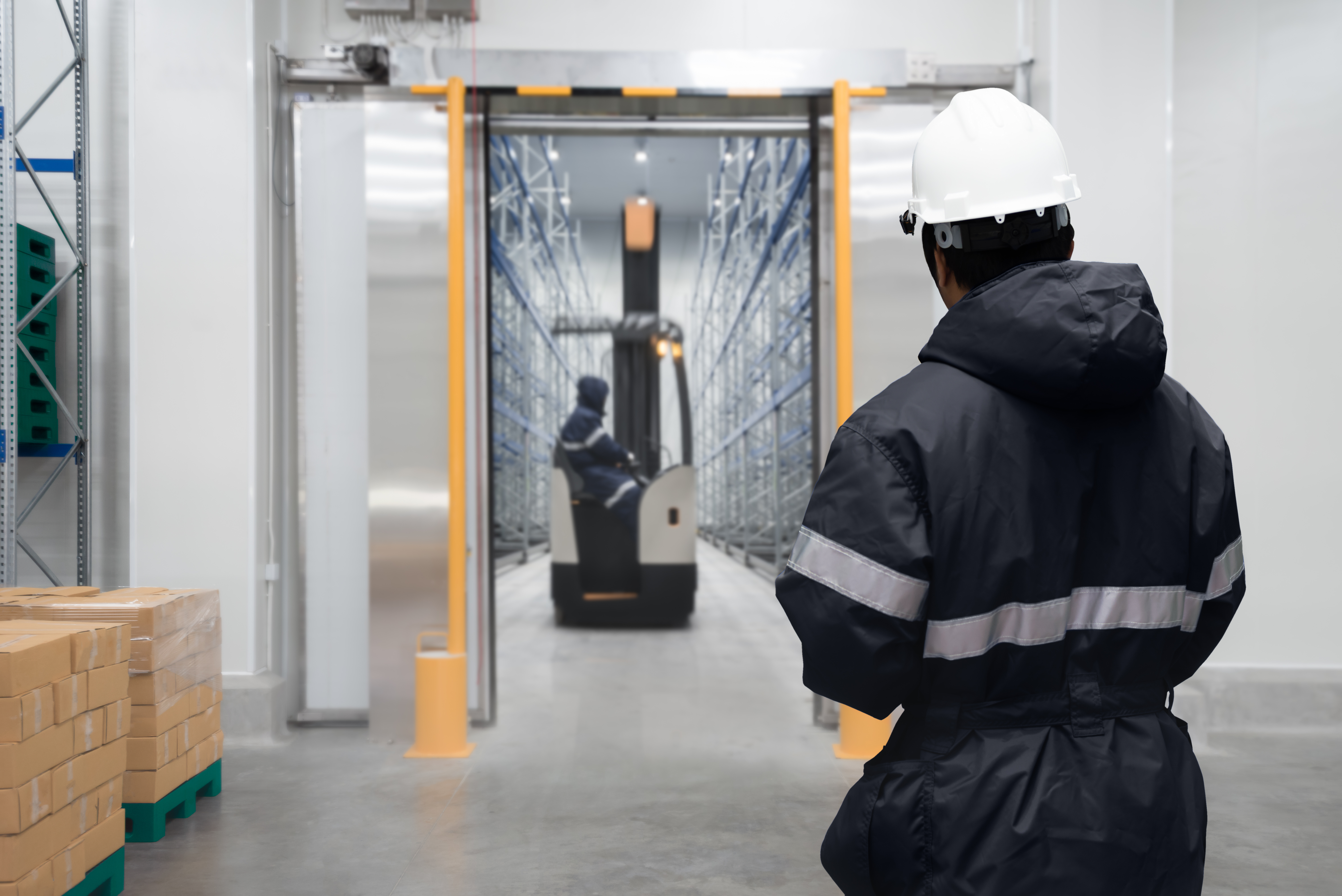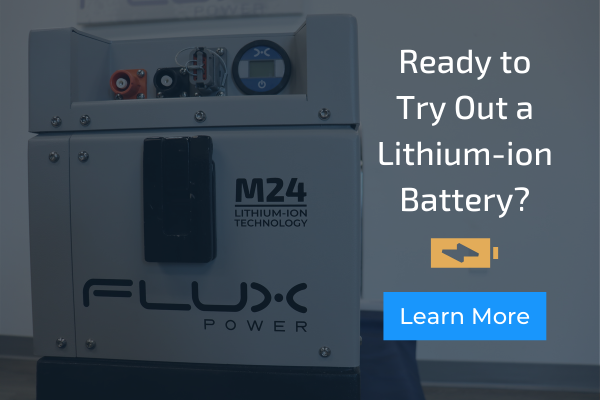Refrigerated Warehouse: The Backbone of the Supply Chain
Warehouse management stretches across industries and verticals; almost any product you buy in a store has spent time in a warehouse at some point in its lifecycle.
While cold storage warehouses are widely used to protect perishable foods, there will be an increased need for more cold-chain space for the recently announced COVID-19 vaccines.
Cold storage warehousing is a highly specialized subset of the warehouse management world with its own unique challenges.
Every warehouse manager is concerned about optimizing space, using automation to increase productivity, improving safety and ergonomics for workers, etc., but cold storage warehouses must do all that and more - while dealing with extremely cold temperatures.
Many refrigerated warehouse managers are discovering that using material handling equipment powered by lithium-ion batteries has helped solve some of the unique challenges posed by operations in cold temperatures.
Cold Chain Operations Face Unique Challenges
The central challenge for cold storage is keeping equipment operators comfortable and committed to their work.
Many types of material handling equipment do not work the same in colder temperatures, so cold chain operations must buy specialized forklifts and forklift batteries.
All of the various buttons, controls, and screens have to be large enough for workers to operate efficiently while wearing thick gloves.
Another challenge in cold chain operations is making sure the equipment and batteries can function in colder temperatures. The batteries must be able to hold a heat source to keep the inside of the battery from getting too cold. Adding these warm solutions will help combat the decline in performance of a battery.
The goal is to make all equipment last throughout an entire shift. In cold chain operations, on-board heaters are essential to ensure that equipment runs smoothly and meets the needs of all company stakeholders.
Why Traditional Cold Storage Equipment Is Failing
Internal combustion forklifts are typically not used around food products because of their carbon monoxide emissions. Electric forklifts are most often a better choice, and traditional lead acid batteries have been the go-to power source for cold storage warehouses.
Lead acid batteries have their own shortcomings in cold applications, however, and cold storage warehouse managers are looking for solutions that address those specific challenges.
Battery Degradation at Reduced Operating Temperatures
Lead acid batteries degrade quickly when operating in colder temperatures, both in their performance and lifespan.
Flux Power’s Director of Engineering, Tim Vaughan stated, “Some studies have shown that lead acid batteries can lose as much as 30% of their capacity in refrigerator environments and up to 50% in freezer environments.”
This creates a vicious cycle: With reduced capacity, a lead acid battery may only work for 5 hours in a cold environment. This puts warehouse managers in a difficult situation where they may find themselves skipping key maintenance requirements for charging and cooling cycles in favor of getting the job done on time.
Not giving lead acid batteries enough time to cool down after charging can have a significant impact on their performance. And skipping the required maintenance will end up shortening a lead acid battery’s overall lifespan.
Lithium-ion batteries maintain their performance level in refrigerated temperatures, and many battery packs are specially designed to be used in colder temperatures with on-board heaters to prevent any performance issues.
Forklift Battery Charging Procedure
Charging a lead acid battery in colder temperatures can be problematic. Colder climates slow down the rate of charge, increasing the time required to charge if a battery needs to be charged during a shift.
When the battery needs to be charged, it is always recommended to charge a lead acid battery in warmer temperatures because the rate of charge is increased. This could be a hassle in cold storage warehouses because of the complication and expense of maintaining different temperature zones.
A top priority for all cold storage warehouses is maximizing the available storage space to reduce energy costs. Because cold storage environments have different customers who require different temperatures for their goods throughout the year, costs can vary dramatically if colder temperatures are needed. Cold storage providers will often look for energy savings elsewhere due to this complication.
Since lead acid batteries are less energy-efficient than lithium-ion batteries, they are not the most ideal solution for companies looking to reduce energy costs year-round.
Lithium-ion batteries can be opportunity charged throughout a shift without having to worry about cold-chain temperatures or significant down-time for charging.
Fleet Management
Keeping track of how operators use their batteries is crucial for optimizing productivity and battery performance.
Because a lead acid battery’s cycle life is shortened in cold storage, operators will sometimes quick-charge their battery to make it through their shift. This makes it much harder to implement battery fleet management best practices in a cold storage warehouse with lead acid batteries because their maintenance requirements are much higher than lithium-ion batteries.
The best practice for a lead acid battery is to fully charge it before use. The more times a lead acid battery is short cycled (not allowed to get a full recharge and cool off properly), the shorter its lifespan will be.
If a single battery is not charged correctly and not performing in line with the rest of the equipment, it can throw the whole operation off.
Lithium-ion batteries have battery management systems, which make the data collection and analysis for optimization much easier. A BMS keeps track of performance data, and some have sensors to detect when a battery’s temperature falls outside the range at which it can safely operate.
Why Lithium-Ion Works Best for Cold Chain Management
For cold storage warehouses that face unique operating challenges, lithium-ion batteries address many of the problems associated with internal combustion engines or lead acid batteries.
Many electric forklifts that have been using lead acid batteries can be retrofitted to use lithium-ion batteries, so making the switch would not require significant infrastructure changes.
As there is more progress made on the COVID-19 vaccines, cold storage operations will be playing a visible role in the storage and distribution process.
The low maintenance requirements of lithium-ion batteries make a safer and more affordable solution for cold storage operations.












